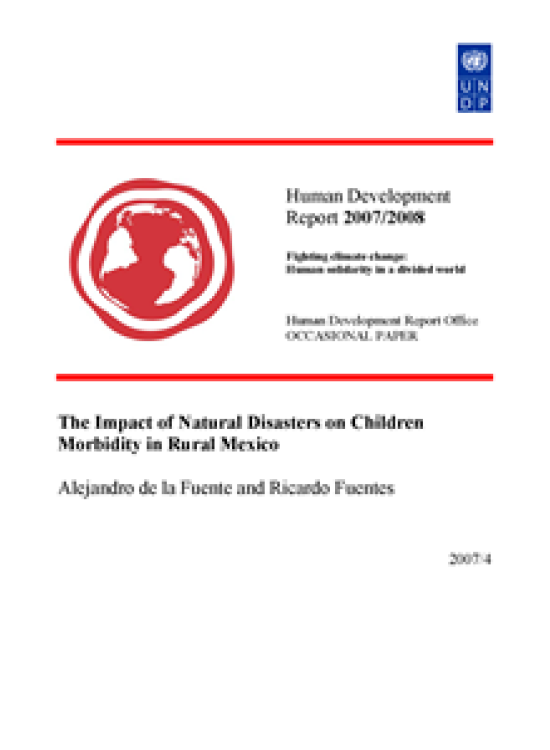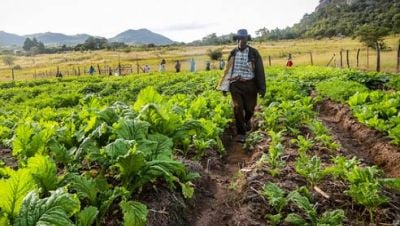The Impact of Natural Disasters on Children Morbidity in Rural Mexico

Download Report by Language
Document
delafuentealejandro2007bpdf.pdf
(244.33 KB)
Citation
De la Fuente, Alejandro, Fuentes, Ricardo. 2008. The Impact of Natural Disasters on Children Morbidity in Rural Mexico. New York.
The Impact of Natural Disasters on Children Morbidity in Rural Mexico
Posted on: January 01, 2008
At least two of the eight core Millennium Development Goals that are set to agreed targets by 2015 comprise aspects directly related with under five children morbidity (i.e., reduce under five mortality and combat the spread of diseases, especially malaria). It has therefore become an imperative to understand how the consequences of a changing climate and some of its most hostile manifestations in the form of droughts and floods, can impinge on human well-being and welfare through health as a fundamental dimension of development. Leaving aside the fact that poverty can create a breeding ground for increased children morbidity through lower expenditures on goods that improve health, such as safe water, staples and basic sanitation. Climatic risks can also be a source of main health problems. Shortage of safe drinking water and infection from contaminated water (i.e., declines in both the quantity and quality of water) often leads to an increase in cases of hepatitis-A, cholera and diarrhoea. Moreover, disruption of croplands results in general under-nourishment of population, particularly in rural areas, increasing susceptibility to infections or even leading to large-scale movements of people which put pressure on water supplies and sanitation facilities in the host communities making the degradation of the public health environment more likely for hosts and migrants alike (Nagy, et al. 2006).

